Press and Fermentation
With the crush complete, the time is nigh for dealing with the must. You may have exceeded your energy limits to get to this point but that’s okay, don’t stop now. Carry forth, and either press the must or start fermentation. Depending on the grapes and your wine recipe, you might have an overnight rest for you and the grapes. It is not uncommon for winemakers to start the day before dawn and work past dusk to complete this phase but hold the faith, a glass of wine awaits you at the end of the day (if not before!).
Pressing is straightforward, squeeze the must to extract juice leaving the pulp and seeds behind. The use of a mechanical press is the most efficient approach. If you don’t have a press, you may be able to rent one from a local winemaking retailer. If you’re processing a small batch, several manual methods can be employed, for example, filling a large pillow case or cheesecloth with the must and squeezing by hand.
Yeast (find a winemaking yeast chart here), is the catalyst converting sugar in the must or juice to an alcoholic beverage during fermentation. The greater the sugar level at the beginning, the more alcoholic the final wine. It can be fermented to dryness or short of dryness, depending on the varietal and approach desired by the winemaker. A Hydrometer is used to track the sugar level in the ferment, informing sugar levels at the beginning and end of fermentation.
The approach between red and white fermentation differs. Red must is commonly fermented in open containers, while white juice containers are closed. Exposure to oxygen during fermentation serves to oxidize the wine, so exposure must be limited. Fermenting red must is protected from oxygen due to the formation of a grape pulp cap along the top, which acts as an oxygen barrier. A closed container is required for white juice since the grape pulp was removed during pressing.
As you may have guessed from the differing fermentation approaches, the steps involved in pressing and fermenting red and white diverge after the crush.
Red grape must is first fermented before being pressed. The fermentation process and time involved extract the necessary color and flavors associated with red wine. Though for the extractions and color to be fully expressed the aforementioned cap along the top must be punched down or for some commercial winemakers, poured over mixing the ferment one to three times daily.
Conversely, in most cases, white grape must moves quickly after the crush to the press. Pressing quickly retains the lighter color and fruit flavors associated with white wine. “In most cases”, recognizes certain white varietals and winemakers may desire to hold the must for a short period before pressing, to achieve certain flavor and color profiles.
Rosé is made of red grapes and is processed similarly to white wine. After crushing, the must is held for a period of time to extract the level of color and flavor desired by the winemaker, then sent to the press before fermentation.
Another fermentation consideration involves whether to conduct malolactic fermentation (MLF). MLF is a process of converting malic acid into wine-producing lactic acid. Lactic acid is found in milk and the result for wine softens and rounds the flavor lessening acid and fruit characteristics. MLF is commonly conducted for reds and certain whites, such as Chardonnay. Sometimes referred to as a secondary fermentation, MLF can run concurrently with the primary fermentation or right after the primary is complete.
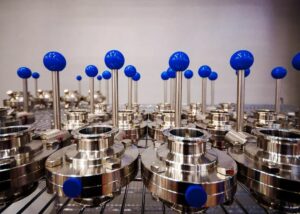
How Does Wine Fermentation Work? (Padigan)
The sweet, nutrient-rich must is an ideal medium for growing diverse species of yeast during the fermentation process. Naturally present yeast may include the familiar Saccharomyces, found in bread and beer, as well as more exotic genera. As a result, the beginning of fermentation involves a lot of biodiversity, with many different types of yeast competing for resources.
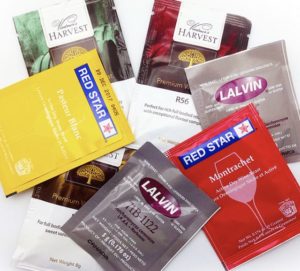
A Simple Guide on How to Choose Wine Yeast (AIH)
I have been making wine from fresh must purchased in 6-gallon pails I can not seem to get it as dry as commercial wines. It appears all sugars have fermented, SG.end up around 0.992-0.994. Is there a certain method or specific yeast to use?

When is Fermentation Finished? (MoreWine!)
Within two weeks most of the sugar will have been consumed by the yeast and fermentation will slow, making it easier to keep track of the falling sugar level of your wine. You want to be aware of your sugar levels because they will give you an overview of how the ferment has been progressing.
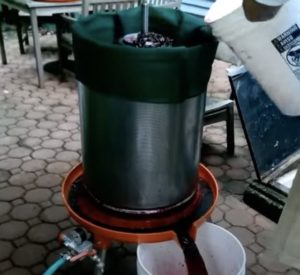
First Bladder Press Use (Seminary View Vineyard and Winery)
In this video we are making use of our new bladder press. We are using it here to press the juice off of our small Chambourcin grape harvest. Enjoy!
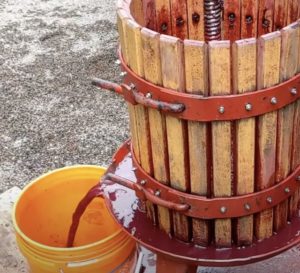
Pressing Grapes (Barnello Winery)
This video shows how we press grapes after they have been crushed and destemmed. After pressing, we end up with 100% juice, which we transfer into vats (usually 32-gallon vats), where the majority of solids fall out to create what is called the gross lees.
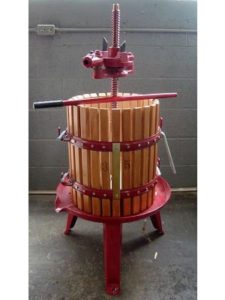
Pressing a Red Wine Fermentation (MoreWine!)
At the end of the fermentation, the wine will have extracted everything it needs from the seeds and skins. When this is completed, it is time to press. It is important to press in a timely fashion because prolonged exposure to grape solids post-fermentation might cause reactions that could generate off-flavors and otherwise ruin the wine.
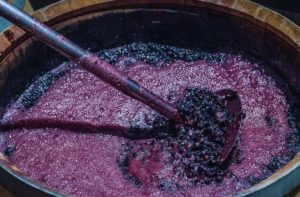
Wine Fermentation Explained: How the Process Affects the Flavor and Texture of Your Vino (Robb Report)
Wine has been made by humans for about 7,000 years, and experts agree that until quite recently it may not have tasted very good. For millennia wine has been the ultimate expression of agriculture.
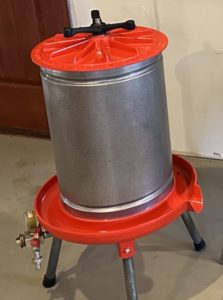
How to Choose a Wine Grape Press! (MoreWine!)
There are basically two types of wine press in the world: Basket Presses (also called Ratchet Presses) and Bladder Presses. The essential concept behind a wine press is to separate the juice or fermented wine (depending on if you’re doing reds or whites) from the skins, seeds and pulp that make up the solid parts of the grape.

Primary vs Secondary Fermentation – Improve Your Winemaking Knowledge (The Home Winemaking Channel)
Eight-minute video about why we use the terms Primary and Secondary fermentation. Are these the right terms for wine, or do they come from beer and naturally have been adopted by home winemakers? What is the difference between primary and secondary fermentation? How does this differ from malolactic fermentation?
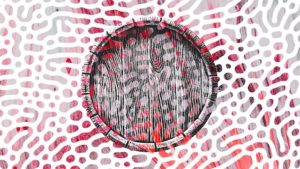
So You Think You Know Malo? (SevenFifty Daily)
Malolactic fermentation is often explained by describing the buttery, creamy notes it contributes to many Chardonnays. A couple of decades ago, that profile was highly valued, and the hallmark of some very well-known California brands. However, as that style has fallen largely out of favor, many wine drinkers have come to take a more negative view of malolactic fermentation as something that can make wine seem heavy or graceless.

